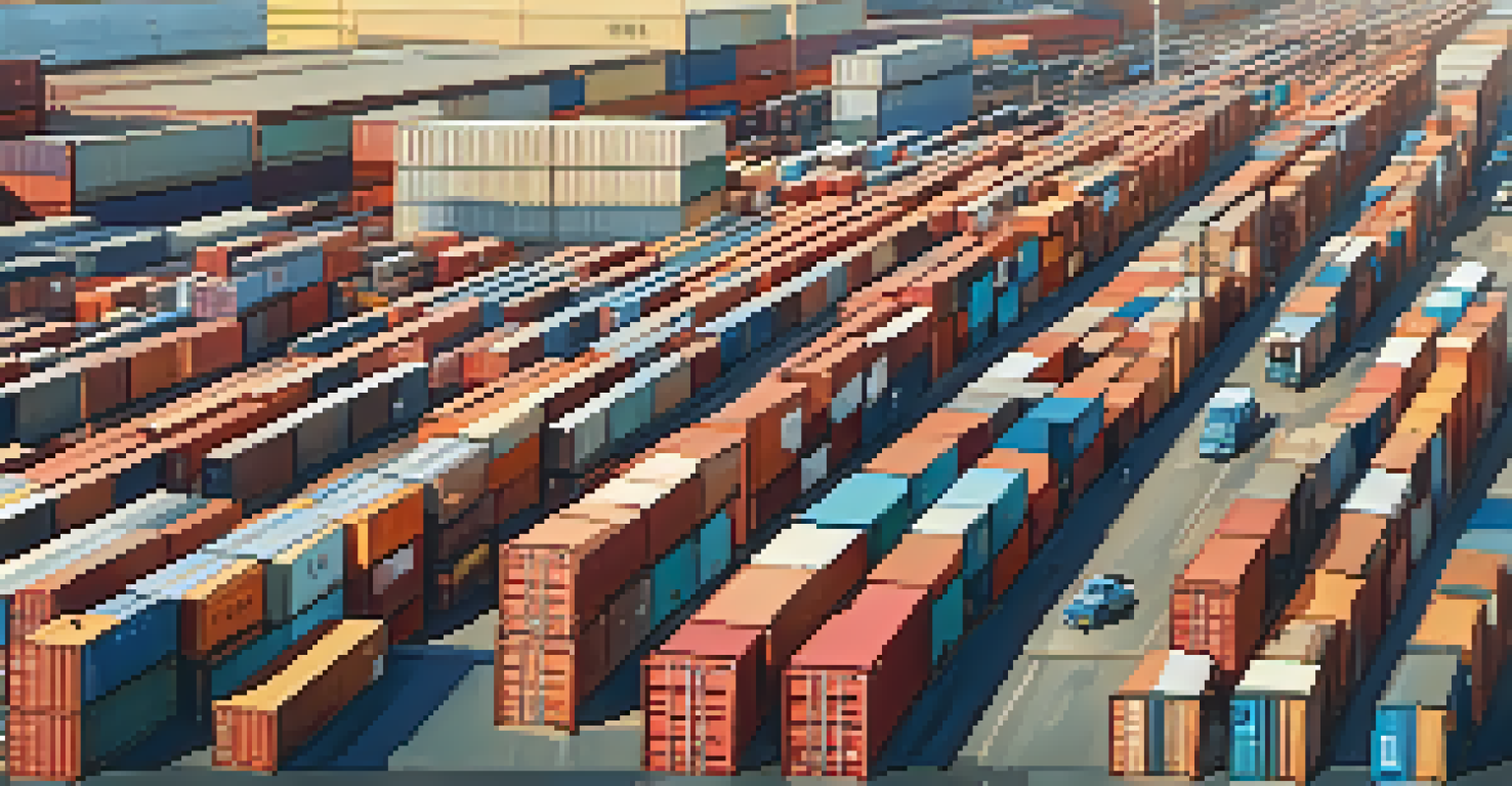Fashion Supply Chains: Risks and Mitigation Strategies

Understanding the Fashion Supply Chain Landscape
The fashion supply chain is a complex web of processes that includes everything from raw material sourcing to the final product reaching consumers. This interconnected system often involves multiple stakeholders, including suppliers, manufacturers, and retailers. Each participant plays a crucial role in ensuring timely delivery and quality, but this complexity also introduces various risks.
In today's fast-paced world, the ability to adapt and innovate in your supply chain can be the difference between success and failure.
For instance, disruptions can occur due to natural disasters, political instability, or even global pandemics, as we’ve seen recently. These challenges can lead to delays, increased costs, and even inventory shortages, which ultimately affect the bottom line. Understanding this landscape is the first step toward identifying and mitigating potential risks.
Additionally, with the rise of fast fashion, speed and efficiency have become top priorities for brands. However, this demand for rapid production can sometimes overlook the importance of sustainable practices and ethical sourcing, further complicating the supply chain dynamics.
Identifying Key Risks in Fashion Supply Chains
Risks in fashion supply chains can be broadly categorized into three main areas: operational, financial, and reputational. Operational risks may include supply interruptions, poor quality control, and logistical challenges. Financial risks often stem from fluctuating raw material costs or currency exchange rates, which can impact profit margins significantly.

Reputational risks, on the other hand, arise from unethical labor practices or environmental violations. In today's socially conscious market, consumers increasingly prioritize brands that align with their values. A single misstep can lead to backlash, affecting brand loyalty and sales.
Technology Enhances Supply Chain Resilience
Leveraging technology like predictive analytics and blockchain helps brands mitigate risks and improve operational efficiency.
By recognizing these categories of risk, fashion brands can take proactive measures to address them. This involves not only assessing current practices but also anticipating future challenges that may arise in this ever-evolving industry.
The Role of Technology in Risk Mitigation
Technology plays an essential role in enhancing the resilience of fashion supply chains. From advanced analytics to blockchain, technological solutions help brands track products from source to store, ensuring transparency and accountability. For example, using sensors and IoT devices can provide real-time data about inventory levels and shipment statuses, allowing brands to respond quickly to disruptions.
Sustainability is no longer a niche; it’s a necessity for businesses to thrive in the modern marketplace.
Moreover, predictive analytics can help forecast demand and identify potential supply chain bottlenecks before they become critical issues. By leveraging these tools, companies can make informed decisions that minimize risks and maintain operational efficiency.
Investing in technology not only mitigates risks but also fosters innovation. Brands that embrace digital transformation are better equipped to adapt to changing market conditions and consumer preferences, ensuring long-term success.
Sustainable Practices as a Risk Mitigation Strategy
Adopting sustainable practices is not just an ethical choice; it’s also a smart risk mitigation strategy. By sourcing materials responsibly and reducing waste, brands can minimize their environmental impact and appeal to a growing base of eco-conscious consumers. This proactive approach helps mitigate reputational risks associated with environmental degradation.
Additionally, sustainable practices often lead to cost savings in the long run. For instance, investing in energy-efficient technologies can reduce operational costs, while recycling initiatives can lower material expenses. These strategies not only safeguard the environment but also bolster the brand’s bottom line.
Sustainability Reduces Reputational Risks
Adopting sustainable practices not only aligns with consumer values but also strengthens brand reputation and reduces costs.
Ultimately, sustainability should be integrated into the core business strategy. By doing so, fashion brands can build a more resilient supply chain while aligning with consumer values and regulatory expectations.
Building Strong Supplier Relationships
Strong relationships with suppliers are vital for mitigating risks in the fashion supply chain. Open communication fosters trust, enabling brands to discuss challenges and collaboratively find solutions. Regular check-ins and performance evaluations can help identify potential issues before they escalate into serious problems.
Moreover, establishing long-term partnerships allows for greater flexibility in times of crisis. When brands and suppliers work closely together, they can quickly adapt to changing circumstances, whether that means shifting production schedules or sourcing alternative materials.
Investing in supplier development also pays dividends. By providing training and resources, brands can enhance their suppliers’ capabilities, ensuring they meet quality and ethical standards. This collaborative approach strengthens the entire supply chain and reduces the likelihood of disruptions.
Regulatory Compliance as a Risk Management Tool
Compliance with local and international regulations is crucial for managing risks in the fashion supply chain. Laws regarding labor practices, environmental impact, and product safety vary widely across countries, and non-compliance can lead to severe penalties and reputational damage. Staying informed about these regulations is essential for any brand operating on a global scale.
Additionally, implementing compliance protocols can help identify areas of vulnerability within the supply chain. Regular audits and assessments ensure that all stakeholders adhere to the necessary standards, promoting accountability and transparency.
Understanding Fashion Supply Risks
Recognizing operational, financial, and reputational risks is crucial for fashion brands to thrive in a complex supply chain.
By prioritizing regulatory compliance, fashion brands not only avoid legal pitfalls but also demonstrate their commitment to ethical practices. This can enhance consumer trust and brand loyalty, ultimately serving as a competitive advantage.
Crisis Management and Contingency Planning
Having a robust crisis management plan is essential for any fashion brand looking to navigate supply chain disruptions. This plan should outline clear protocols for addressing various scenarios, such as natural disasters, supplier failures, or reputational crises. By preparing for the unexpected, brands can minimize the impact on their operations and maintain customer trust.
Additionally, contingency planning involves identifying alternative suppliers and logistics partners that can step in during emergencies. Establishing these relationships ahead of time ensures that brands can pivot quickly without sacrificing quality or delivery timelines.

Regularly reviewing and updating the crisis management plan is equally important. As the fashion industry evolves and new risks emerge, brands must adapt their strategies to remain resilient and responsive to change.